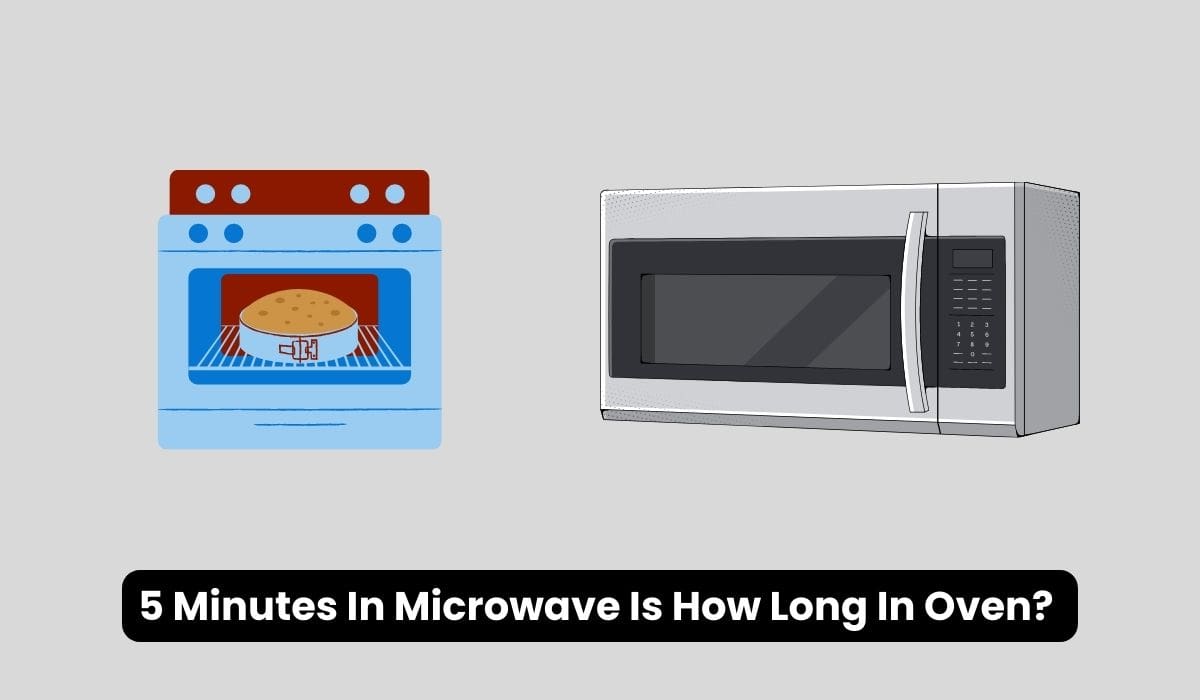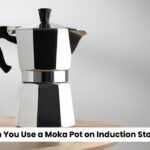In the modern kitchen, microwaves and ovens have become indispensable appliances, each offering unique advantages and applications. While microwaves are often associated with quickly reheating leftovers or defrosting frozen meals, ovens are typically preferred for baking and cooking dishes that require more time and precision. However, determining the appropriate cooking time for a particular food item can be challenging when transitioning from one appliance to another.
This article will delve into the intriguing realm of microwave-to-oven time conversion. Also, discuss 5 minutes in microwave is how long in ven? By understanding the fundamental principles behind these cooking methods and their inherent differences, we aim to provide you with the knowledge to confidently adapt your microwave recipes to the traditional oven.
Throughout this article, we will explore various food items and their recommended cooking times to ensure that your culinary creations turn out perfectly cooked and free from the risk of being underdone. By providing practical insights and guidelines, we hope to empower you to harness the full potential of microwaves and ovens, expanding your culinary repertoire and creating delicious meals easily.
So, whether you are a busy professional seeking to whip up a quick meal or an aspiring home cook yearning to experiment with new recipes, understanding the relationship between microwaves and ovens will prove invaluable. Let us embark on this culinary journey together and unlock the secrets of time conversion, enabling you to transform your favorite microwave dishes into delectable oven-baked delights.
Table of Contents
First Understanding Microwaves and Ovens:
What Are Microwaves?
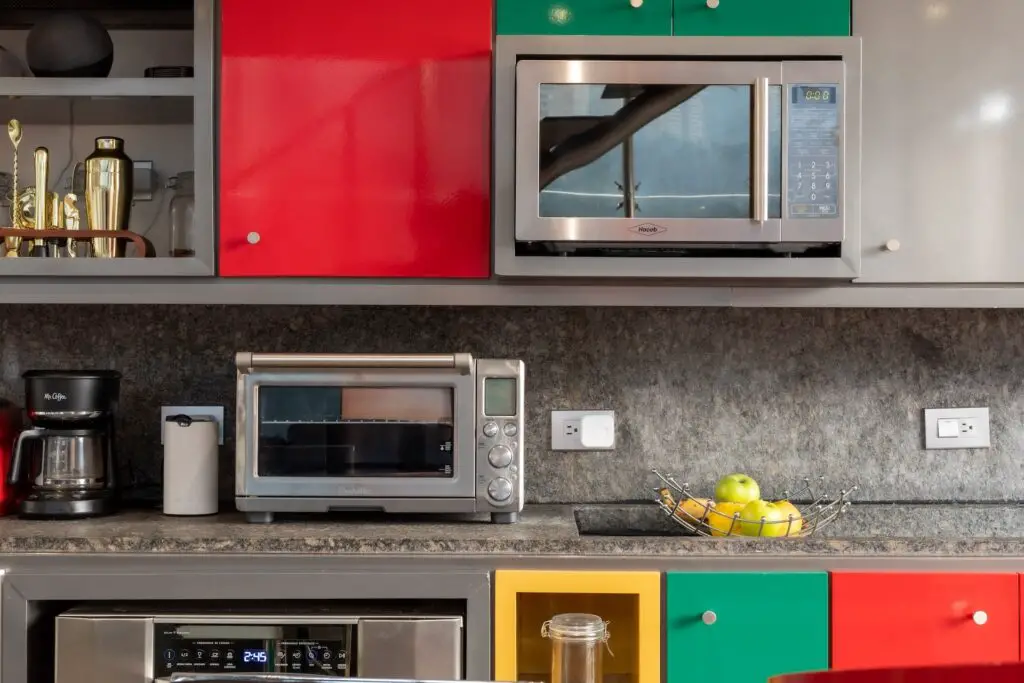
Microwaves are compact kitchen appliances that use microwave radiation to heat and cook food. They are designed to cook or reheat dishes rapidly, making them ideal for busy individuals seeking a quick meal. Microwaves emit microwave frequencies, which excite water molecules within the food, generating heat and cooking the dish evenly.
How Do Microwaves Work?
When you place food in a microwave, electromagnetic waves pass through the food and cause the water molecules to vibrate. This vibration produces heat, quickly raising the temperature of the food. Unlike ovens, microwaves directly heat the water molecules inside the food, resulting in faster cooking times.
What Are Ovens?
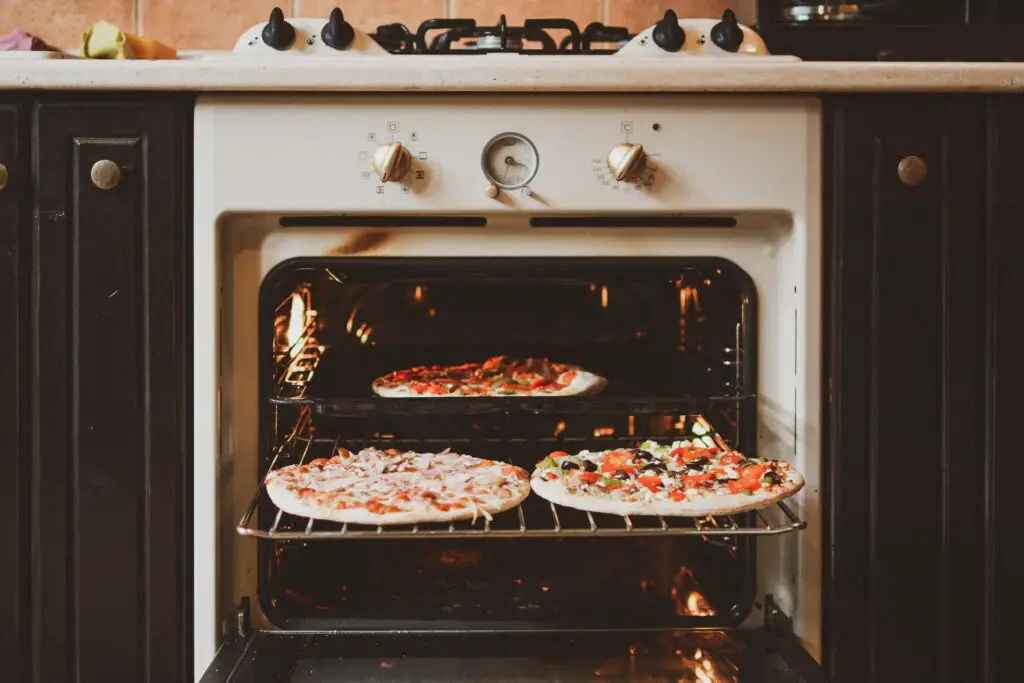
On the other hand, ovens are larger appliances commonly used for baking, roasting, and broiling. They utilize dry heat for cooking food, creating a caramelized exterior and moist interior. Ovens come in various types, including conventional, convection, and toaster ovens with unique cooking features and temperature control.
How Do Ovens Work?
Ovens are essential appliances in the kitchen, offering a versatile and efficient way to cook a wide range of dishes. Understanding how ovens work can help you utilize their features effectively and achieve delicious results. Ovens heat the air inside an enclosed space, transferring the heat to the food. The heating element, usually located at the top or bottom of the oven, generates the necessary heat.
As the oven heats up, the air inside becomes hot, creating a consistent temperature throughout. This heated air surrounds the food, cooking it from all sides and allowing for even thorough cooking.
Ovens have temperature control options, allowing you to set the desired cooking temperature based on the recipe requirements. Whether baking a cake, roasting a turkey, or broiling fish, the oven provides a reliable and efficient cooking method to bring out the flavours and textures in your culinary creations.
5 Minutes In Microwave Is How Long In Oven? [Detailed Answer]
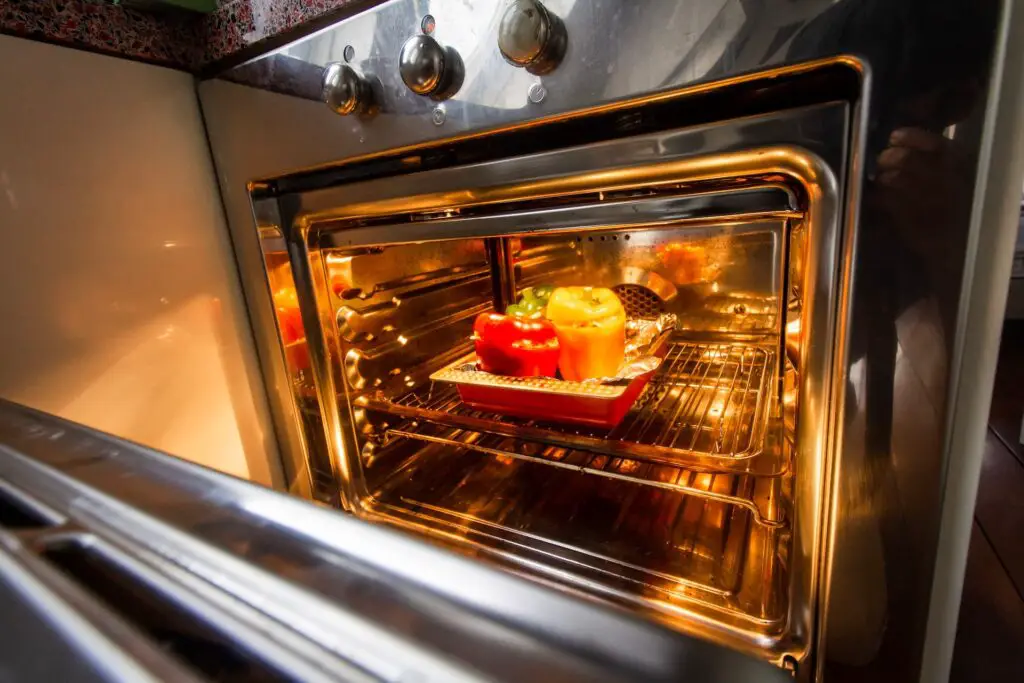
Have you ever wondered, “How long is 5 minutes in the microwave equivalent to in the oven?” Many people often wonder how to convert cooking times between these two kitchen appliances. While microwaves and ovens serve the same purpose of cooking food, they differ in how they generate heat and the speed at which they cook. Understanding how to convert cooking times can help you achieve the desired results, whether in a hurry or prefer the traditional oven cooking method.
When it comes to microwaves, their primary advantage is speed. Microwaves use microwave radiation to excite water molecules within the food, generating heat and cooking the dish quickly. You can have a warm meal ready to enjoy in just a few minutes. However, microwaves may not always provide the same texture and browning that ovens can achieve.
On the other hand, ovens rely on dry heat to cook food. They take longer to preheat and cook but offer more control over cooking. Ovens create a caramelized exterior and a moist interior, perfect for baking, roasting, and broiling. Ovens also allow for better browning and crisping of dishes, giving them a desirable texture and appearance.
Now, let’s delve into converting cooking times between microwaves and ovens. It’s important to note that conversion is not an exact science, as it depends on various factors, such as the type of food, the quantity being cooked, and the specific microwave and oven models used. However, there are some general guidelines to follow.
As a rule of thumb, microwave cooking times are around three to four times faster than oven cooking times. This means that if a recipe calls for 5 minutes in the microwave, it roughly translates to 15-20 minutes in the oven. However, adjusting the temperature and cooking mode is crucial to ensure the dish cooks evenly.
To convert cooking times accurately, consider the factors that affect cooking times, such as the power of your microwave and the type of oven you’re using. Microwaves vary in wattage, with higher-wattage microwaves cooking food faster. On the other hand, ovens have different heat distribution and efficiency, so the cooking time may vary.
To achieve the best results, start by preheating the oven to the recommended temperature for the recipe. Then, based on the guidelines mentioned earlier, calculate the approximate cooking time for the dish. Remember that it’s always better to undercook slightly than to overcook, as you can always check for doneness and continue cooking if needed.
When converting cooking times, it’s essential to consider the specific food item you’re cooking. Different foods have different cooking requirements, and a one-size-fits-all approach may not always yield the desired outcome. It’s helpful to refer to cooking charts and guides that provide specific cooking times for various foods in microwaves and ovens.
Cooking Time Is In The Microwave and Oven:
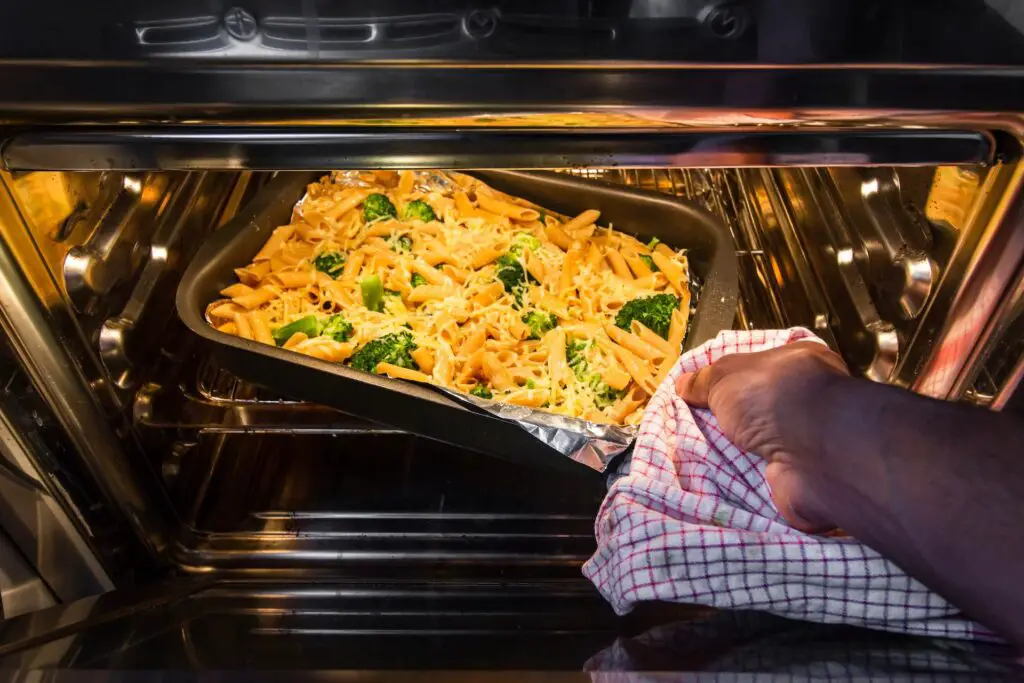
When converting microwave cooking times to the oven, it’s essential to consider the contrasting cooking mechanisms and adjust accordingly. Microwave cooking tends to be faster than oven cooking, so be prepared to increase the cooking time when using an oven. As a general rule of thumb, the microwave is your go-to option if time is of the essence. However, if you have the luxury of time and crave the satisfaction of experimenting with intricate flavor profiles or creating more elaborate dishes, the oven is your culinary ally.
The key to successful conversions lies in knowing your oven. Familiarize yourself with its performance, temperature accuracy, and heat distribution characteristics. Older ovens, for instance, may require additional cooking time compared to what a recipe dictates. Due to their diminished heat retention capabilities, older models may need a little extra time to achieve the desired doneness. Modern ovens with advanced insulation and technology tend to maintain heat more efficiently, reducing cooking time.
To ensure accurate conversions, consider investing in an oven thermometer. This simple tool can provide invaluable insights into your oven’s temperature, allowing you to make precise adjustments and achieve consistent results.
Remember that some dishes, especially those designed specifically for microwaves, may not translate seamlessly to the oven. Individual microwave-safe containers and packaging materials may not be suitable for conventional ovens. Always check the manufacturer’s guidelines or transfer the food into an appropriate oven-safe dish to avoid mishaps or damage to your oven.
Converting cooking times between the microwave and oven may seem like a culinary tightrope walk. Still, armed with an understanding of the distinct cooking methods and some oven knowledge, you’ll confidently conquer any recipe conversion. Embrace the versatility of your microwave for quick and convenient meals while celebrating the oven’s ability to produce beautifully cooked dishes with enhanced flavors. With practice, you’ll unlock a world of culinary possibilities and delight in creating homemade masterpieces using both of these indispensable kitchen appliances.
How To Convert Recipe’s Cooking Time From Microwave To Oven:
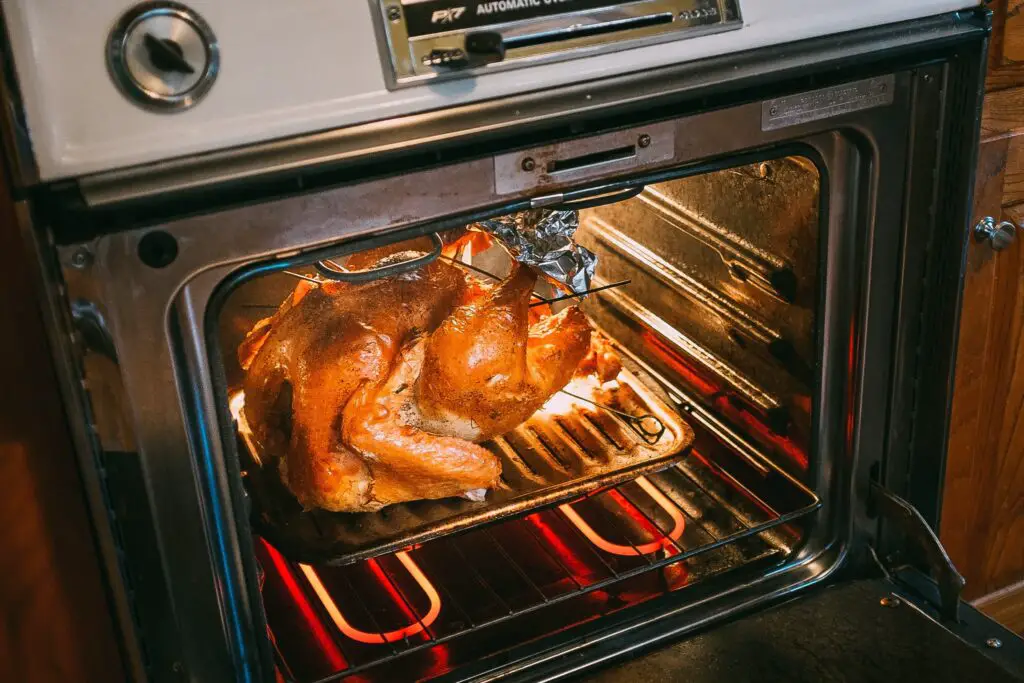
Converting a recipe’s cooking time from the microwave to the oven requires a systematic approach to ensure accurate results. While microwave and oven cooking times differ significantly, a reliable converter can simplify the process and help you achieve the desired outcome.
To begin, seek a trustworthy converter that considers the disparity in power between microwaves and ovens. Such converters estimate how much longer a dish should be baked in the oven than microwaving it. You can swiftly obtain the converted cooking time by inputting the original cooking time specified in your recipe, along with the standard oven temperature (typically 350°F or as instructed in the recipe).
These converters are handy tools for bridging the microwave and oven cooking gap. They consider factors such as heat distribution, cooking methods, and power variations to provide an estimation that reflects the different nature of each appliance.
When using a converter, it’s crucial to remember that the suggested converted time is an approximation. Individual oven performance, variations in temperature accuracy, and even the type and size of the dish being used can influence the actual cooking time. Hence, keeping a close eye on the dish as it cooks and performing periodic checks for doneness using visual inspection, temperature probes, or toothpick tests is advisable.
While converters offer a convenient way to convert cooking times, it’s worth noting that not all recipes are suitable for direct conversion from microwave to oven. Some dishes are designed specifically for the quick and efficient cooking provided by microwaves, and attempting to replicate them in an oven may yield suboptimal results. Additionally, individual microwave-safe containers or packaging may not be suitable for oven use, so reviewing the manufacturer’s guidelines or transferring the food to an appropriate oven-safe dish is essential.
To ensure success when converting microwave recipes to oven-baked delights, consider the following tips:
- Understand the fundamental differences between microwave and oven cooking: Microwaves cook from the inside out, while ovens cook from the outside in. This disparity in cooking methods affects the cooking time required.
- Choose a reliable converter: Look for converters specifically designed for converting microwave cooking times to oven cooking times. Check user reviews or seek recommendations from trusted sources to ensure accuracy.
- Monitor the cooking process: While the converter provides an estimated cooking time, oven performance and dish characteristics can influence the time required. Keep a close eye on the dish, perform visual checks, and use additional doneness tests.
- Exercise caution with delicate recipes: Delicate or precise recipes, such as those involving baking or intricate flavour profiles, may require adjustments beyond simple time conversions. Understand the nuances of the recipe and consider consulting culinary resources or experts for guidance.
By following these guidelines and utilizing a reliable converter, you can confidently convert microwave recipes into oven-baked creations. Embrace the versatility and potential of the oven’s enhanced flavours, and enjoy the satisfaction of creating delicious dishes using this alternative cooking method.
How To Convert Baking Time From Microwave To Oven:
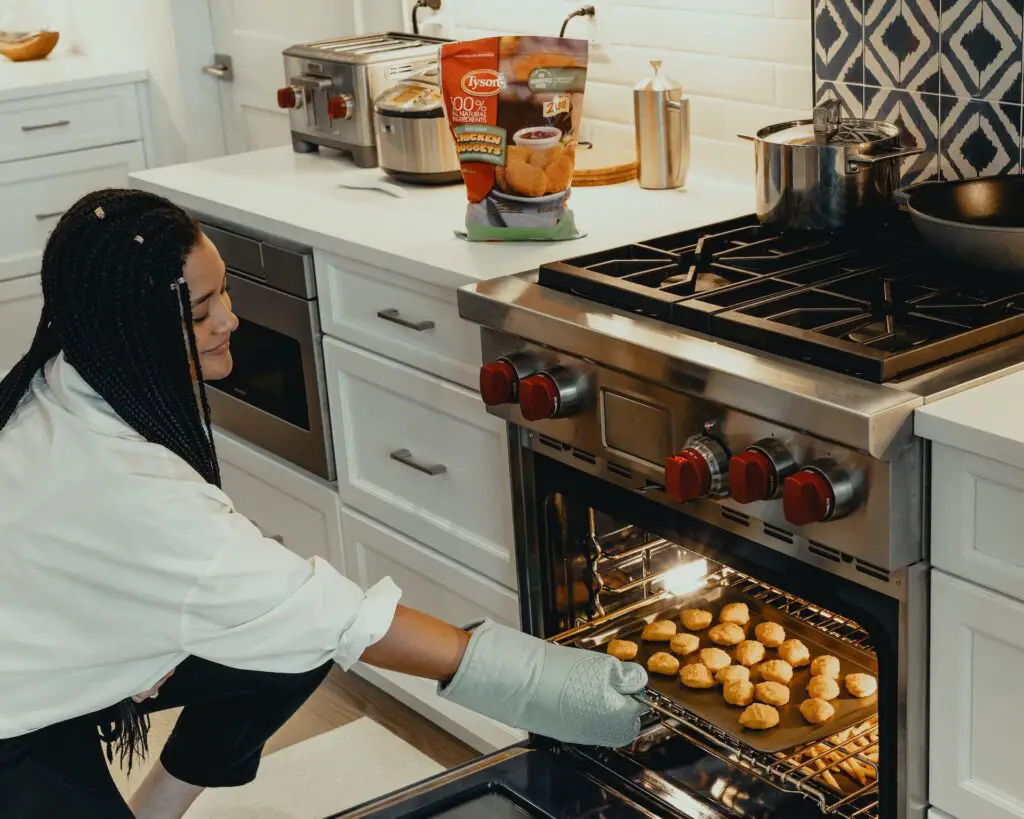
Converting baking time from the microwave to the oven can be perplexing, but fret not! Following a few simple steps, you can confidently convert microwave cooking times to baking times without trial and error.
To begin, refer to your recipe for the indicated microwave cooking time. This information is typically located at the bottom of the food or container wrapper. If you cannot find the cooking time on the packaging, consult your recipe book or search for reliable sources online that provide microwave cooking times for similar dishes.
Once you have determined the microwave cooking time, the next step is to multiply it by a factor of 4. This multiplication factor accounts for the significant difference in cooking methods between the microwave and oven. For example, if your recipe calls for a microwave cooking time of 10 minutes, you would multiply 10 by 4, resulting in a baking time of 40 minutes.
Understanding the fundamental differences between microwave and oven cooking is crucial to comprehending the substantial time difference between the two methods. Microwaves utilize electromagnetic waves that penetrate the food and rapidly heat it from within. In contrast, ovens rely on heated air to cook food, resulting in slower and more even cooking. This disparity in cooking mechanisms necessitates the longer baking times required in the oven.
It’s important to note that the 4x multiplication factor is a general guideline, and actual baking times may vary depending on oven performance, dish size, and recipe specifics. To ensure accuracy, periodically check the dish as it bakes, employing visual cues, toothpick tests, or temperature probes to assess doneness.
When dealing with convection ovens, the conversion process is slightly different. Convection ovens feature a fan that circulates hot air, resulting in more efficient and even cooking. As a result, convection ovens tend to require shorter cooking times than conventional ovens. To convert microwave cooking times to convection oven times, reduce the baking time by approximately 25% compared to the 4x conversion factor. This adjustment accounts for the improved heat distribution and airflow in convection ovens.
While these conversion guidelines provide a starting point, it’s important to recognize that each recipe and oven may have unique requirements. Delicate or complex recipes might require additional adjustments beyond simple time conversions. Experimentation, along with an understanding of your oven’s performance, will help refine your conversion skills over time.
By following these steps and considering the nuances of microwave and oven cooking, you can confidently convert microwave baking times to oven baking times. Embrace the versatility and precision of oven baking, and enjoy the satisfaction of creating delicious homemade treats with perfectly adjusted cooking times.
6 Extra Tips For Converting Microwave Time To Baking:
Converting microwave time to baking requires careful consideration and a few essential tips to ensure successful results. Whether you’re craving a warm homemade treat or transforming a microwave recipe into a baked delight, these guidelines will help you confidently navigate the conversion process:
1. Understand the Differences
Recognize that microwaves and ovens operate on different cooking principles. Microwaves use electromagnetic waves to heat food from within, while ovens rely on heated air to cook food from the outside in. This discrepancy necessitates adjustments in cooking times.
2. Multiply By A Conversion Factor
As a general rule, multiply the microwave cooking time by a factor of 3 to 4 when converting to baking time. This multiplication accounts for the slower, more even heat distribution in ovens. However, this is a starting point, and baking times may vary based on individual recipes and ovens.
3. Monitor The Baking Process:
While the conversion factor provides an initial estimate, monitoring the baking process closely is important. Factors such as oven temperature accuracy, the size and type of baking dish, and the batter’s or dough’s thickness can influence the actual baking time. Perform visual checks, conduct toothpick tests to check for doneness, and adjust the time accordingly.
4. Consider Recipe Specifics:
Certain recipes, particularly delicate baked goods like soufflés or angel food cakes, may not be suitable for direct conversion from the microwave. These recipes often require precise techniques or specialized ingredients, making replicating the same results in an oven challenging. It’s best to consult specific oven-based recipes for these delicate treats.
5. Adjust for Convection Ovens:
If you’re using a convection oven, which circulates hot air for even cooking, you may need to make further adjustments. Convection ovens tend to bake faster than conventional ovens. Start by reducing the baking time by approximately 25% compared to the 3 to 4 times conversion factor. Monitor the progress closely and make additional adjustments as needed.
6. Experiment and Learn
Converting microwave time to baking is not an exact science. It often requires a degree of experimentation and getting to know your oven’s unique characteristics. Keep notes on your conversions and the resulting outcomes to refine your approach over time. With practice, you’ll develop a better understanding of your oven’s performance and be able to convert recipes more confidently.
Also Read: Can Electric Stoves Explode?
Conclusion:
Understanding the conversion between microwave times and oven baking times is a valuable skill for any home cook. This article aimed to provide you with the knowledge to confidently adapt recipes and ensure delicious results, regardless of whether you have a microwave.
By familiarizing yourself with the appropriate oven times, you can plan your meals more effectively, anticipate the needs of your guests, and create culinary masterpieces that will leave a lasting impression.
So, whether you’re a novice or an experienced chef, remember to remember these conversions, as they will elevate your cooking game to new heights. Happy cooking!
